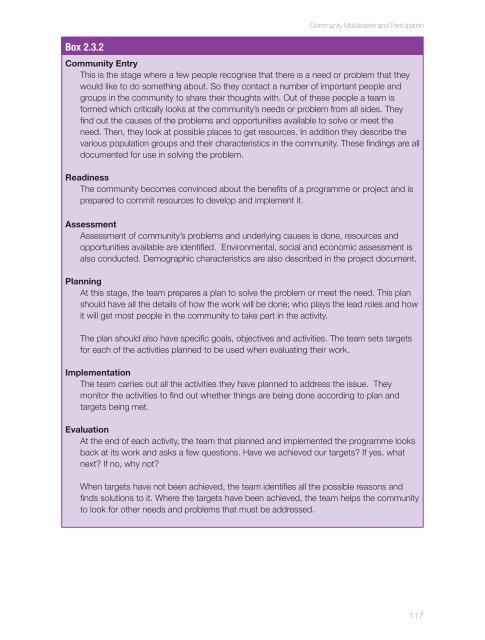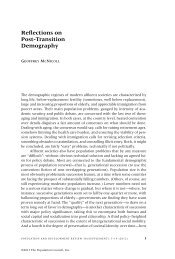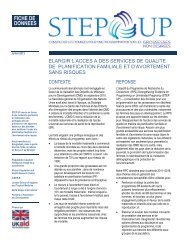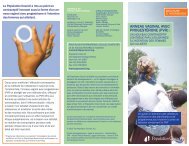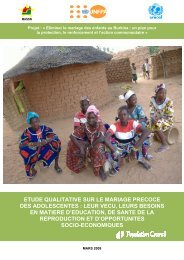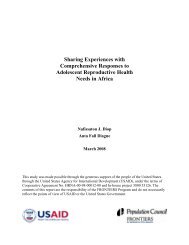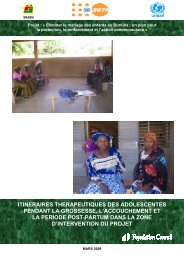Community Health Volunteer's Training Manual - Population Council
Community Health Volunteer's Training Manual - Population Council
Community Health Volunteer's Training Manual - Population Council
You also want an ePaper? Increase the reach of your titles
YUMPU automatically turns print PDFs into web optimized ePapers that Google loves.
Box 2.3.2<br />
<strong>Community</strong> Mobilisation and Participation<br />
<strong>Community</strong> Entry<br />
This is the stage where a few people recognise that there is a need or problem that they<br />
would like to do something about. So they contact a number of important people and<br />
groups in the community to share their thoughts with. Out of these people a team is<br />
formed which critically looks at the community’s needs or problem from all sides. They<br />
find out the causes of the problems and opportunities available to solve or meet the<br />
need. Then, they look at possible places to get resources. In addition they describe the<br />
various population groups and their characteristics in the community. These findings are all<br />
documented for use in solving the problem.<br />
Readiness<br />
The community becomes convinced about the benefits of a programme or project and is<br />
prepared to commit resources to develop and implement it.<br />
Assessment<br />
Assessment of community’s problems and underlying causes is done, resources and<br />
opportunities available are identified. Environmental, social and economic assessment is<br />
also conducted. Demographic characteristics are also described in the project document.<br />
Planning<br />
At this stage, the team prepares a plan to solve the problem or meet the need. This plan<br />
should have all the details of how the work will be done; who plays the lead roles and how<br />
it will get most people in the community to take part in the activity.<br />
The plan should also have specific goals, objectives and activities. The team sets targets<br />
for each of the activities planned to be used when evaluating their work.<br />
Implementation<br />
The team carries out all the activities they have planned to address the issue. They<br />
monitor the activities to find out whether things are being done according to plan and<br />
targets being met.<br />
Evaluation<br />
At the end of each activity, the team that planned and implemented the programme looks<br />
back at its work and asks a few questions. Have we achieved our targets? If yes, what<br />
next? If no, why not?<br />
When targets have not been achieved, the team identifies all the possible reasons and<br />
finds solutions to it. Where the targets have been achieved, the team helps the community<br />
to look for other needs and problems that must be addressed.<br />
117


